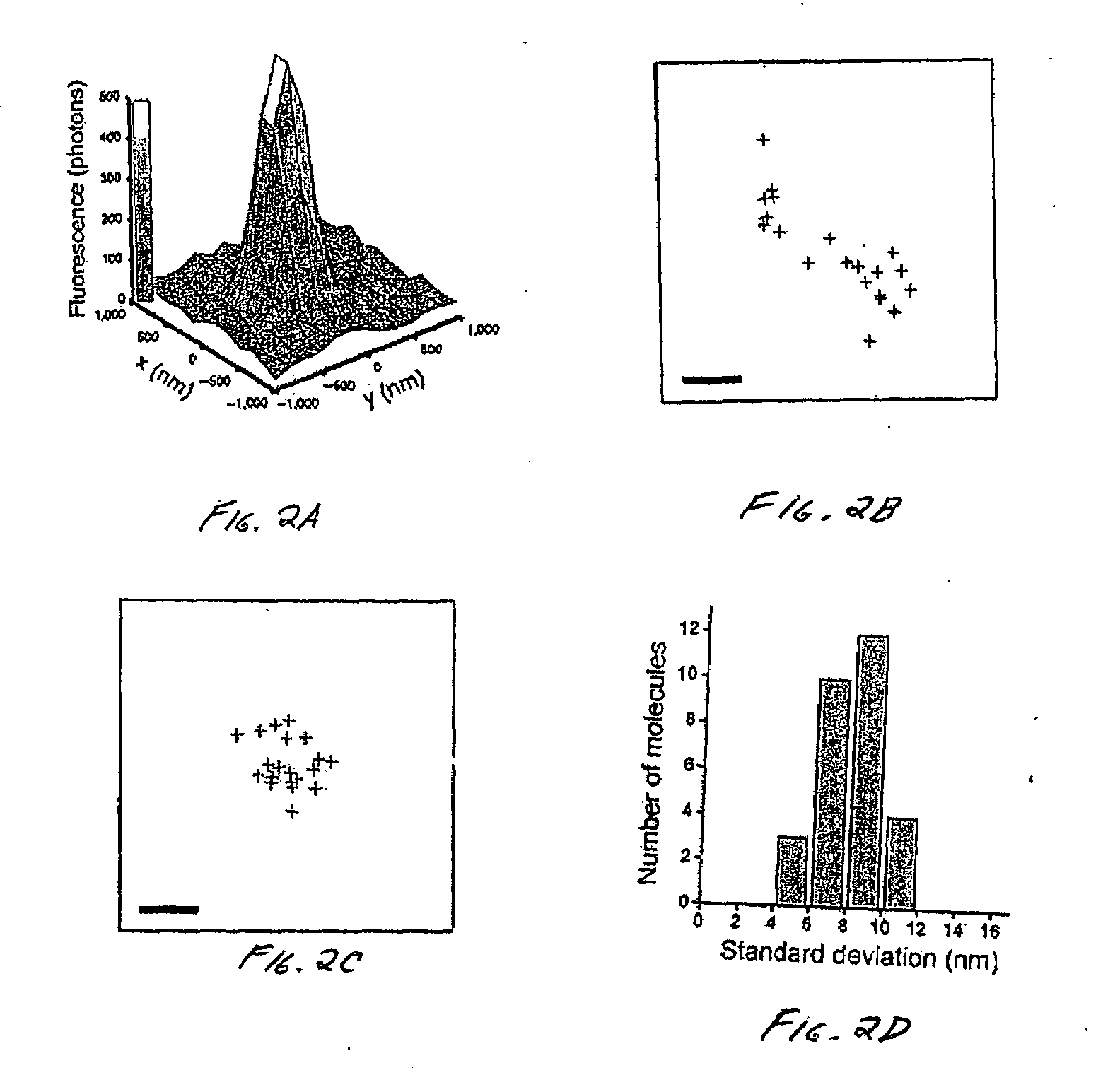Sub-diffraction image resolution and other imaging techniques
a sub-diffraction image and imaging technology, applied in the direction of instruments, material analysis through optical means, optical elements, etc., can solve the problems of electron microscopy using electrons, standard fluorescence microscopy is not useful for ultra-structural imaging, and each has certain unsatisfactory limitations
- Summary
- Abstract
- Description
- Claims
- Application Information
AI Technical Summary
Benefits of technology
Problems solved by technology
Method used
Image
Examples
example
[0056]This example shows a high-resolution optical microscopy, stochastic optical reconstruction microscopy (“STORM”), in which a fluorescence image is constructed from high-accuracy localization of individual fluorescent entities (“fluorophores”) that are switched on and off using light of different colors, in accordance with one embodiment of the invention. The STORM imaging process in this example includes a series of imaging cycles (FIG. 1a). In each cycle, a fraction of the fluorophores in the field of view are switched on or activated, such that each of the active fluorophores is optically resolvable from the rest, i.e. their images are not overlapping. This allows the position of these fluorophores to be determined with high accuracy. Repeating this process for multiple cycles, each causing a stochastically different subset of fluorophores to be turned on or activated, enables the positions of many fluorophores to be determined and thus an overall image to be reconstructed. I...
PUM
| Property | Measurement | Unit |
|---|---|---|
| distance | aaaaa | aaaaa |
| distance | aaaaa | aaaaa |
| wavelength | aaaaa | aaaaa |
Abstract
Description
Claims
Application Information
 Login to View More
Login to View More - R&D
- Intellectual Property
- Life Sciences
- Materials
- Tech Scout
- Unparalleled Data Quality
- Higher Quality Content
- 60% Fewer Hallucinations
Browse by: Latest US Patents, China's latest patents, Technical Efficacy Thesaurus, Application Domain, Technology Topic, Popular Technical Reports.
© 2025 PatSnap. All rights reserved.Legal|Privacy policy|Modern Slavery Act Transparency Statement|Sitemap|About US| Contact US: help@patsnap.com



